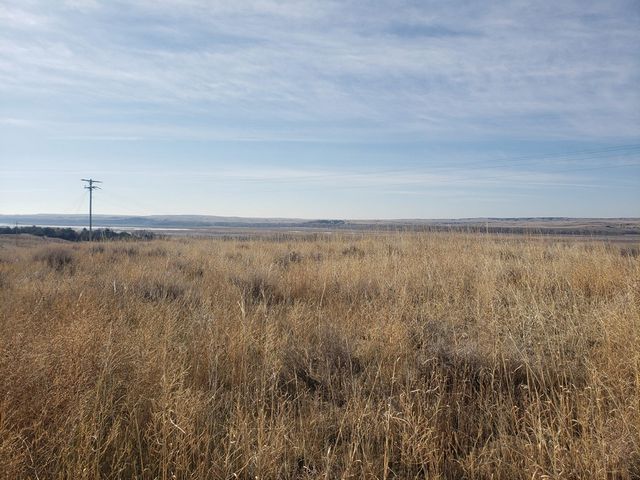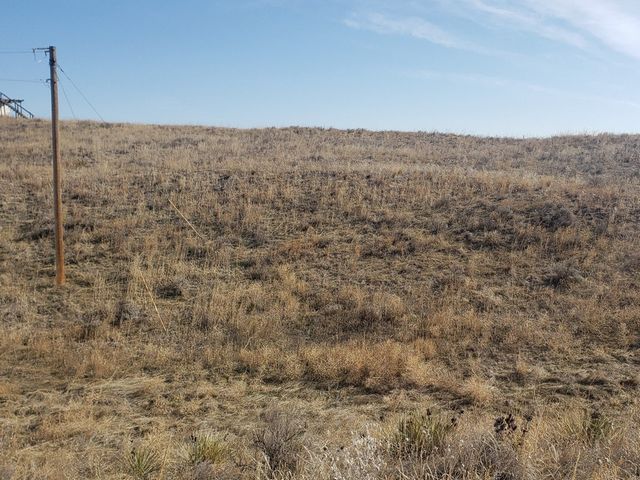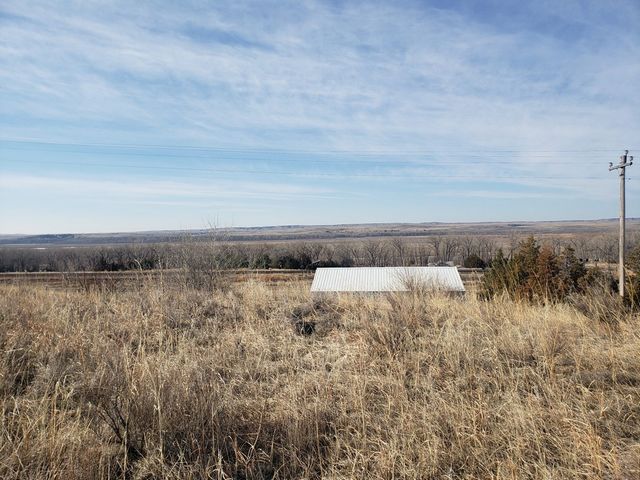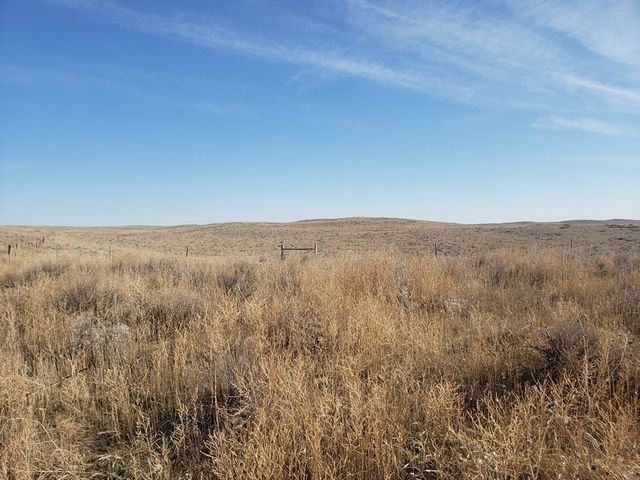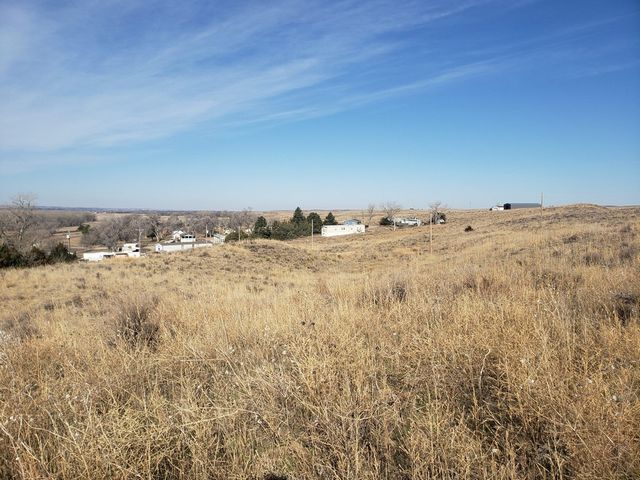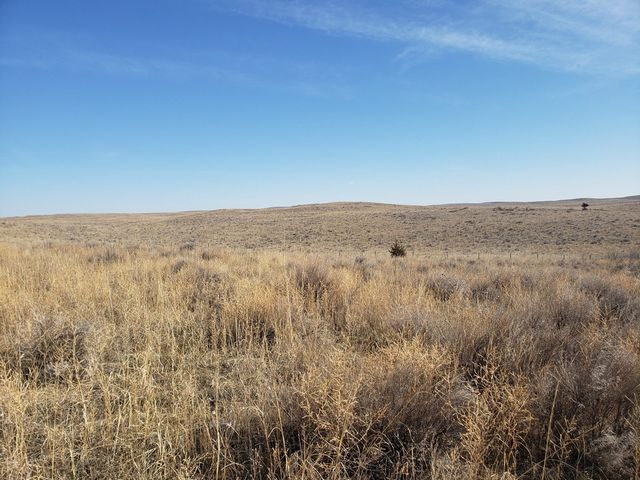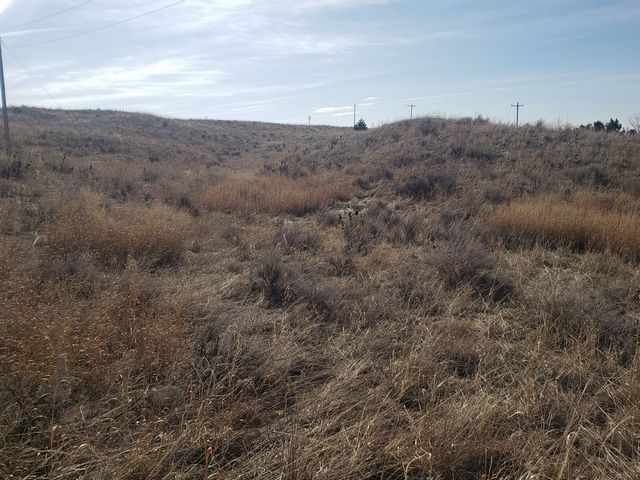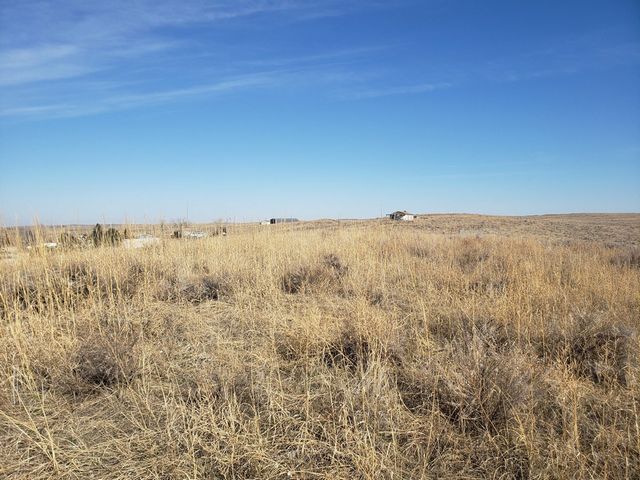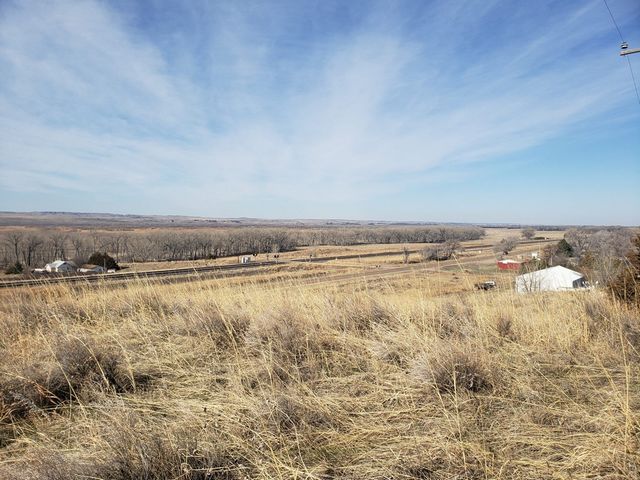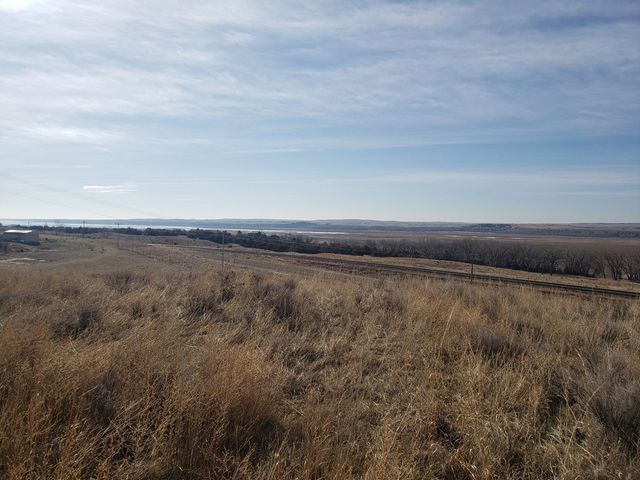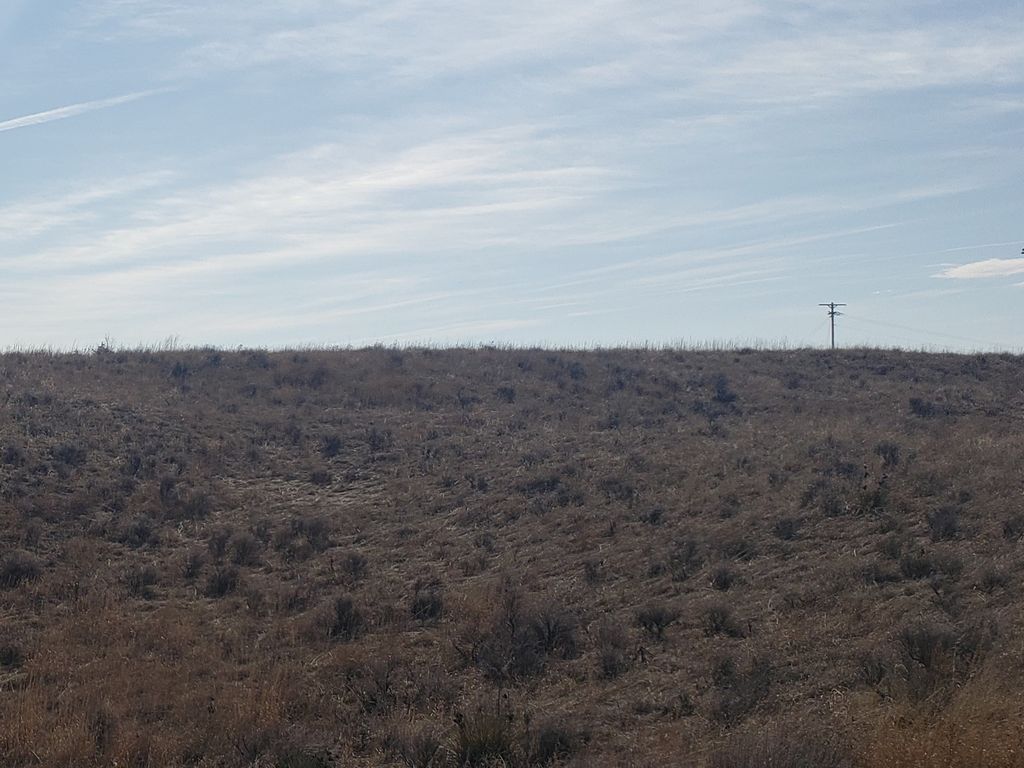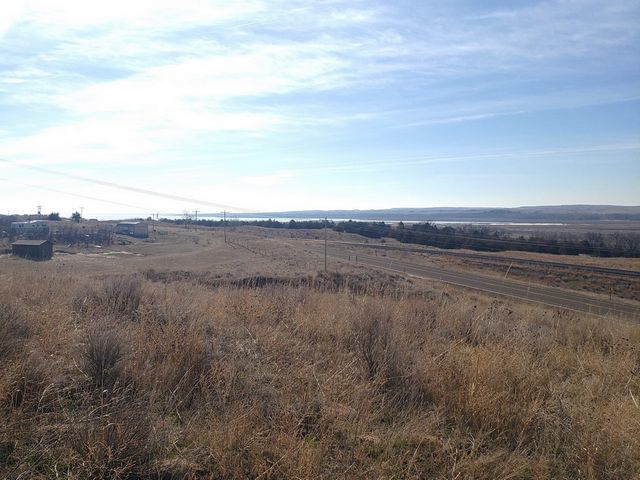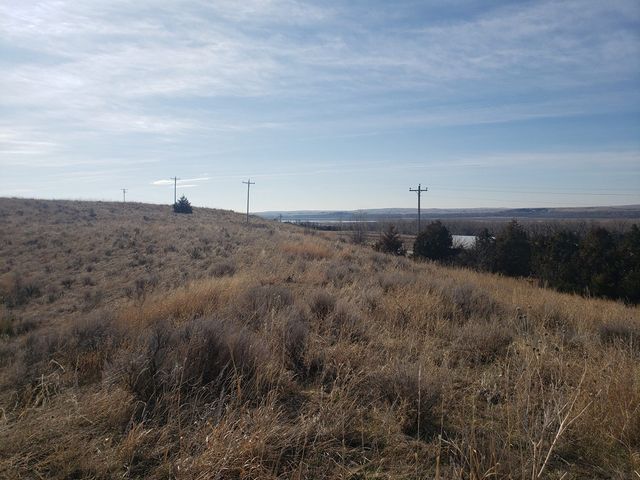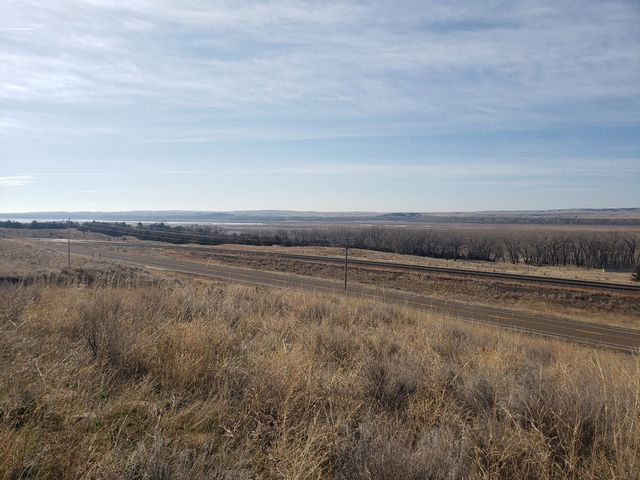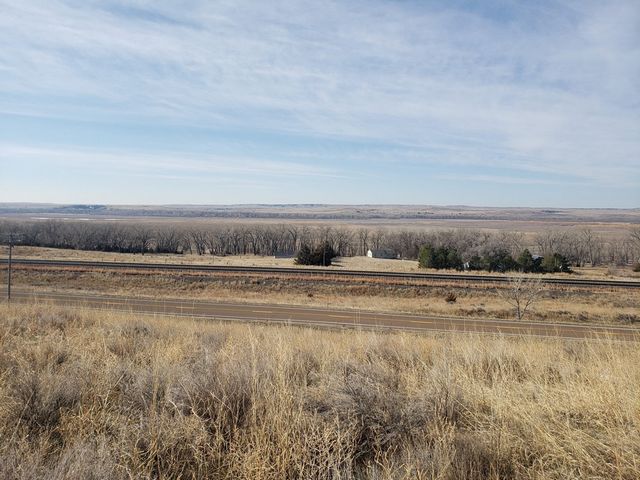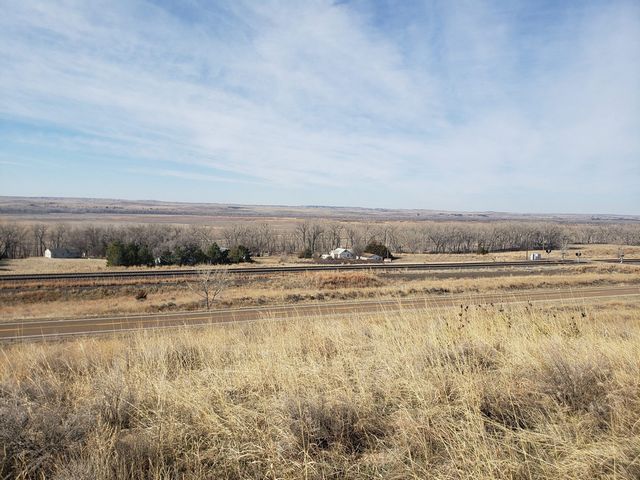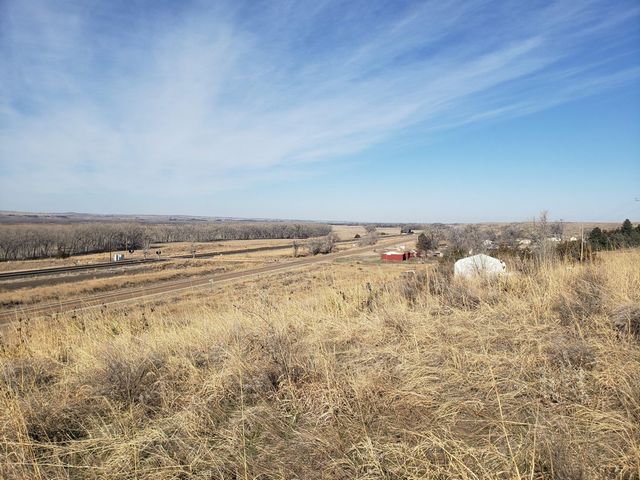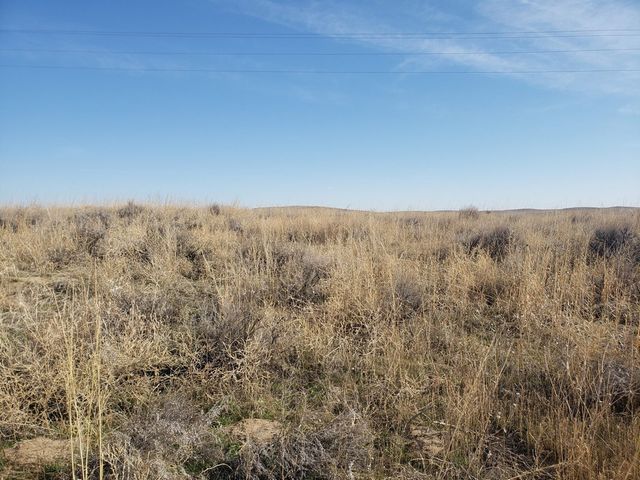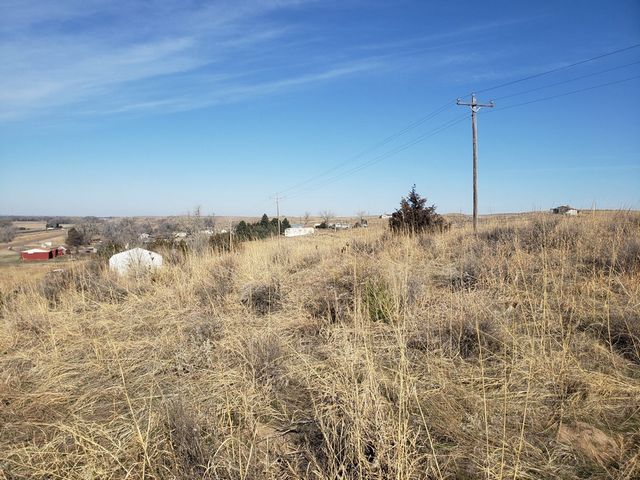PICTURES ARE LOADING...
Land (For sale)
43,560 sqft
Reference:
EDEN-T96271849
/ 96271849
Omaha Beach Lots is being offered in 5 individual lots, all contiguous, Buyer can choose one or any combination of lots. These lots all are located off Hwy 92 in Omaha Beach Ct. near the west end of Lake McConaughy. These lots have terrific views of beautiful Lake McConaughy and the surrounding sandhills. Omaha Beach Lots are being offered at $50,000.00 each. Contact Rick Kusel for more information. Omaha Beach Lots consists of five individual lots that are all contiguous, see below for details. The lots range from .72 acres to 1.04 acres Lot B 11 is .81 acres with property tax of $324.04 Lot B 12 is 1 acre with property tax of $337.28 Lot C 4 is .72 acres with property tax of $318.14 Lot C 5 is 1 acre with property tax of $337.28 Lot C 6 is 1.04 acres with property tax of $341.96 There is electrical service on/near these properties. Lake McConaughy, the recreational jewel of western Nebraska, is the largest lake in the state with over 100 miles of shoreline, 35,700 surface acres of water, 24 miles long, 4 miles wide, and is famous for its white sand beaches. Each year, thousands of boaters, campers and outdoor enthusiasts make the Lake McConaughy area their destination for fun! In addition to Lake McConaughy which is fed by the North Platte River, you have Lake Ogallala at 320 surface acres "the little lake" nestled below Kingsley Dam (the 2nd largest earthen dam in the world). These two bodies of water provide endless opportunities for anglers of any skill level, young and old. The vast variety of fish you can catch between these two lakes include; Walleye, White Bass, Stripers, Wipers, Catfish, Northern Pike, Smallmouth Bass, Yellow Perch, Rainbow & Brown Trout. Lake McConaughy can accommodate virtually every type of watercraft you can imagine. Lake McConaughy and the North Platte River Valley also provide tremendous opportunities for hunters. This area is famous for duck and goose hunting. In addition to waterfowl hunting there is small game, varmints, White Tailed Deer, Mule Deer, and Pronghorn in the area. N/A All appurtenant water rights associated with these properties will transfer to the Buyer at Closing. All Seller owned mineral rights associated with these properties will transfer to the Buyer at Closing. N/A Weather Highlights Summer High:the July high is around 90 degrees Winter Low:the January low is 15 Rain:averages 20 inches of rain a year Snow:averages 30 inches of snow a year "Geography is often destiny. It has always been so with Ogallala, a town that came into existence at the junction of the major routes of the transcontinental migrations and of the cattle trails north from Texas." From 1870 to 1885, Ogallala was the "gateway of the Northern Plains". Hard-bitten Wyoming and Montana cattlemen met in Ogallala's hotel and saloons with Texas cattle kings and bargained over cattle prices. Gold flowed freely across the table, liquor across the bar, and occasionally blood across the floor as a bullet brought some unlucky cowhand to his death on the floorboards of Tuck's Saloon. The first non-native visitors to this area were the trappers from St. Louis. Next came the pioneers who followed the Oregon Trail. To protect them, the government established forts at intervals along the trail. Then came the Union Pacific Railroad. It is assumed that Ogallala had its beginning about 1867. Settlers started to follow the railroad west, and the cattlemen started driving their cattle to Ogallala to be shipped east or to be sold to Montana and Wyoming ranchers. Ogallala's early history was unspectacular, promising to be nothing but a section house and water tank for the railroad. Then, in the spring of 1868, three men appeared to set the destiny of Ogallala. These men were the Lonergan brothers and Louis Aufdengarten. The Lonergan brothers came to do construction work for the Union Pacific Railroad. They found the plains to their liking, and subsequently became interested in Ogallala. By 1876, Ogallala had changed little from its infant days in 1868. The stores were all south of the railroad tracks, and fronted what was called Railroad Street and the trail leading south to the Platte River. Along this trail extended the rest of the town. The town consisted of saloons with such names as The Cowboy's Rest and the Crystal Palace. The last building on the street was the Ogallala House - dining room widely patronized because of its excellent fare. It was run by S.S. Gast. By 1880, Ogallala consisted of one courthouse, one school, one hotel, two dwelling houses, and twenty-five permanent residents. The tempo of living in early Ogallala changed with the seasons. During the months of winter and early spring life was drab and dreary. Shortly after the first of June the town began to hum with activity as the first Texas trail herds started to arrive. During the three summer months business boomed - ten to twelve herds, each of two hundred or more trail hands taxed the facilities of Ogallala. Sleeping rooms and meals were hard to find when the trail hands were in town. Activities in Ogallala continued at a fever pitch until the end of August, by then the Texans were heading back to Texas; by November Ogallala had settled back in quiet and peaceful repose. Ogallala's population of floaters, gamblers, trades-people and dance hall hostesses drifted to Omaha or Cheyenne to spend the winter. One hotel, one supply house and a single saloon remained open for the winter. The community sank into a state of inanimation until next spring. In 1882-1884, the settlers and farmers reached Ogallala. These men were encouraged by the Union Pacific Railroad because the railroad started selling their land at quite low prices. A serious epidemic of Texas fever swept over Nebraska during the summer of 1884. The disease first appeared near Ogallala in July apparently being brought in by Texas cattle. The disease spread quickly and it caused very heavy losses to the cattlemen. The ranchers had started to put expensive blooded bulls in their herds. These ranchers demanded that Texas cattle be excluded from Nebraska. This ban of Texas cattle was a damaging blow to the Texas trail herd business. This was the end of the trail period of Ogallala, as the wild, often violent town became a peaceful farmer's settlement. Omaha Beach Lots at Lake Mac are 45 minutes from Ogallala and Interstate 80, 3 .5 hours northeast of Denver, CO and 4.5 hours west of Omaha, NE These properties are only minutes away from the lake's famous white sands beaches, popular boat ramps, restaurants, and bars.
View more
View less
Omaha Beach Lots wird in 5 einzelnen Losen angeboten, die alle zusammenhängen, der Käufer kann eines oder eine beliebige Kombination von Losen wählen. Diese Grundstücke befinden sich alle am Highway 92 in Omaha Beach Ct. in der Nähe des westlichen Endes des Lake McConaughy. Diese Grundstücke bieten einen herrlichen Blick auf den wunderschönen Lake McConaughy und die umliegenden Sandhügel. Omaha Beach Lots werden zu je 50.000,00 $ angeboten. Kontaktieren Sie Rick Kusel für weitere Informationen. Omaha Beach Lots besteht aus fünf einzelnen Grundstücken, die alle zusammenhängend sind, siehe unten für Details. Die Grundstücke reichen von 0,72 Hektar bis 1,04 Hektar Los B 11 ist 0,81 Hektar groß mit einer Grundsteuer von 324,04 $ Los B 12 ist 1 Hektar mit einer Grundsteuer von 337,28 $ Grundstück C 4 ist 0,72 Hektar groß mit einer Grundsteuer von 318,14 $ Grundstück C 5 ist 1 Hektar mit einer Grundsteuer von 337,28 $ Los C 6 ist 1,04 Hektar groß und Grundsteuer von 341,96 $ Es gibt einen Stromanschluss auf/in der Nähe dieser Grundstücke. Lake McConaughy, das Freizeitjuwel im Westen Nebraskas, ist der größte See des Staates mit über 100 Meilen Uferlinie, 35.700 Hektar Wasserfläche, 24 Meilen lang, 4 Meilen breit und ist berühmt für seine weißen Sandstrände. Jedes Jahr machen Tausende von Bootsfahrern, Campern und Outdoor-Enthusiasten die Gegend um den Lake McConaughy zu ihrem Ziel für Spaß! Neben dem Lake McConaughy, der vom North Platte River gespeist wird, gibt es den Lake Ogallala mit einer Fläche von 320 Hektar, "den kleinen See", der sich unterhalb des Kingsley Dam (dem zweitgrößten Erddamm der Welt) befindet. Diese beiden Gewässer bieten endlose Möglichkeiten für Angler aller Spielstärken, ob jung oder alt. Die große Vielfalt an Fischen, die Sie zwischen diesen beiden Seen fangen können, umfasst: Zander, Weißbarsch, Streifenbarsch, Wischer, Wels, Hecht, Schwarzbarsch, Gelbbarsch, Regenbogen- und Bachforelle. Der Lake McConaughy bietet Platz für praktisch jede Art von Wasserfahrzeug, die Sie sich vorstellen können. Der Lake McConaughy und das North Platte River Valley bieten ebenfalls enorme Möglichkeiten für Jäger. Dieses Gebiet ist berühmt für die Enten- und Gänsejagd. Neben der Jagd auf Wasservögel gibt es in der Gegend Niederwild, Varmints, Weißwedelhirsche, Maultierhirsche und Pronghorns. N/A Alle zugehörigen Wasserrechte, die mit diesen Grundstücken verbunden sind, gehen bei Abschluss auf den Käufer über. Alle Mineralrechte, die sich im Besitz des Verkäufers befinden und mit diesen Konzessionsgebieten in Verbindung stehen, gehen mit Abschluss auf den Käufer über. N/A Wetter-Highlights Sommer-Hoch: Das Juli-Hoch liegt bei etwa 90 Grad Winter-Tiefstwert: Januar-Tiefstwert ist 15 Regen: durchschnittlich 20 Zentimeter Regen pro Jahr Schnee: durchschnittlich 30 Zentimeter Schnee pro Jahr "Geografie ist oft Schicksal. Das war schon immer so in Ogallala, einer Stadt, die an der Kreuzung der Hauptrouten der transkontinentalen Migrationen und der Viehwege nördlich von Texas entstand." Von 1870 bis 1885 war Ogallala das "Tor zur nördlichen Ebene". Hartgesottene Viehzüchter aus Wyoming und Montana trafen sich in Ogallalas Hotel und Saloons mit texanischen Viehkönigen und verhandelten über die Viehpreise. Gold floss ungehindert über den Tisch, Schnaps über die Bar und gelegentlich Blut über den Boden, als eine Kugel einen unglücklichen Kuhknecht auf den Dielen von Tuck's Saloon in den Tod stürzte. Die ersten nicht-einheimischen Besucher dieser Gegend waren die Trapper aus St. Louis. Als nächstes kamen die Pioniere, die dem Oregon Trail folgten. Um sie zu schützen, errichtete die Regierung in Abständen entlang des Weges Forts. Dann kam die Union Pacific Railroad. Es wird angenommen, dass Ogallala um 1867 seinen Anfang nahm. Die Siedler begannen, der Eisenbahn nach Westen zu folgen, und die Viehzüchter begannen, ihr Vieh nach Ogallala zu treiben, um es nach Osten zu verschiffen oder an Viehzüchter in Montana und Wyoming zu verkaufen. Die frühe Geschichte von Ogallala war unspektakulär und versprach, nichts anderes als ein Sektionshaus und ein Wassertank für die Eisenbahn zu sein. Dann, im Frühjahr 1868, erschienen drei Männer, um das Schicksal von Ogallala zu bestimmen. Bei diesen Männern handelte es sich um die Brüder Lonergan und Louis Aufdengarten. Die Brüder Lonergan kamen, um Bauarbeiten für die Union Pacific Railroad zu verrichten. Sie fanden die Ebenen nach ihrem Geschmack und begannen sich in der Folge für Ogallala zu interessieren. Bis 1876 hatte sich Ogallala seit den Kindertagen von 1868 kaum verändert. Die Läden befanden sich alle südlich der Bahngleise und lagen an der sogenannten Railroad Street und dem Weg, der nach Süden zum Platte River führte. Entlang dieses Weges erstreckte sich der Rest der Stadt. Die Stadt bestand aus Saloons mit Namen wie The Cowboy's Rest und Crystal Palace. Das letzte Gebäude in der Straße war das Ogallala-Haus - ein Speisesaal, der wegen seiner hervorragenden Küche sehr beliebt war. Es wurde von S.S. Gast betrieben. Um 1880 bestand Ogallala aus einem Gerichtsgebäude, einer Schule, einem Hotel, zwei Wohnhäusern und fünfundzwanzig ständigen Einwohnern. Das Lebenstempo im frühen Ogallala änderte sich mit den Jahreszeiten. In den Monaten des Winters und des frühen Frühlings war das Leben trist und trostlos. Kurz nach dem ersten Juni begann die Stadt vor Aktivität zu brummen, als die ersten texanischen Trail-Herden ankamen. Während der drei Sommermonate boomte das Geschäft - zehn bis zwölf Herden mit jeweils zweihundert oder mehr Wanderarbeitern besteuerten die Anlagen von Ogallala. Schlafräume und Mahlzeiten waren schwer zu finden, wenn die Wanderarbeiter in der Stadt waren. Die Aktivitäten in Ogallala dauerten bis Ende August auf Hochtouren, bis dahin waren die Texaner auf dem Weg zurück nach Texas; Im November hatte sich Ogallala wieder in Ruhe und friedlicher Ruhe niedergelassen. Ogallalas Bevölkerung von Floatern, Spielern, Händlern und Tanzsaal-Hostessen zog nach Omaha oder Cheyenne, um dort den Winter zu verbringen. Ein Hotel, ein Versorgungshaus und ein einziger Salon blieben über den Winter geöffnet. Die Gemeinde versank bis zum nächsten Frühjahr in einem Zustand der Leblosigkeit. In den Jahren 1882-1884 erreichten die Siedler und Bauern Ogallala. Diese Männer wurden von der Union Pacific Railroad ermutigt, weil die Eisenbahn anfing, ihr Land zu recht niedrigen Preisen zu verkaufen. Eine schwere Epidemie des Texas-Fiebers fegte im Sommer 1884 über Nebraska hinweg. Die Krankheit trat erstmals im Juli in der Nähe von Ogallala auf und wurde offenbar von texanischen Rindern eingeschleppt. Die Krankheit breitete sich schnell aus und verursachte den Viehzüchtern sehr hohe Verluste. Die Viehzüchter hatten begonnen, teure Blutbullen in ihre Herden zu züchten. Diese Viehzüchter forderten, dass texanische Rinder aus Nebraska ausgeschlossen werden sollten. Dieses Verbot von texanischen Rindern war ein verheerender Schlag für das texanische Trail-Herdengeschäft. Dies war das Ende der Trail-Periode von Ogallala, da die wilde, oft gewalttätige Stadt zu einer friedlichen Bauernsiedlung wurde. Die Omaha Beach Lots am Lake Mac sind 45 Minuten von Ogallala und der Interstate 80, 3,5 Stunden nordöstlich von Denver, CO und 4,5 Stunden westlich von Omaha, NE entfernt.
Omaha Beach Lots is being offered in 5 individual lots, all contiguous, Buyer can choose one or any combination of lots. These lots all are located off Hwy 92 in Omaha Beach Ct. near the west end of Lake McConaughy. These lots have terrific views of beautiful Lake McConaughy and the surrounding sandhills. Omaha Beach Lots are being offered at $50,000.00 each. Contact Rick Kusel for more information. Omaha Beach Lots consists of five individual lots that are all contiguous, see below for details. The lots range from .72 acres to 1.04 acres Lot B 11 is .81 acres with property tax of $324.04 Lot B 12 is 1 acre with property tax of $337.28 Lot C 4 is .72 acres with property tax of $318.14 Lot C 5 is 1 acre with property tax of $337.28 Lot C 6 is 1.04 acres with property tax of $341.96 There is electrical service on/near these properties. Lake McConaughy, the recreational jewel of western Nebraska, is the largest lake in the state with over 100 miles of shoreline, 35,700 surface acres of water, 24 miles long, 4 miles wide, and is famous for its white sand beaches. Each year, thousands of boaters, campers and outdoor enthusiasts make the Lake McConaughy area their destination for fun! In addition to Lake McConaughy which is fed by the North Platte River, you have Lake Ogallala at 320 surface acres "the little lake" nestled below Kingsley Dam (the 2nd largest earthen dam in the world). These two bodies of water provide endless opportunities for anglers of any skill level, young and old. The vast variety of fish you can catch between these two lakes include; Walleye, White Bass, Stripers, Wipers, Catfish, Northern Pike, Smallmouth Bass, Yellow Perch, Rainbow & Brown Trout. Lake McConaughy can accommodate virtually every type of watercraft you can imagine. Lake McConaughy and the North Platte River Valley also provide tremendous opportunities for hunters. This area is famous for duck and goose hunting. In addition to waterfowl hunting there is small game, varmints, White Tailed Deer, Mule Deer, and Pronghorn in the area. N/A All appurtenant water rights associated with these properties will transfer to the Buyer at Closing. All Seller owned mineral rights associated with these properties will transfer to the Buyer at Closing. N/A Weather Highlights Summer High:the July high is around 90 degrees Winter Low:the January low is 15 Rain:averages 20 inches of rain a year Snow:averages 30 inches of snow a year "Geography is often destiny. It has always been so with Ogallala, a town that came into existence at the junction of the major routes of the transcontinental migrations and of the cattle trails north from Texas." From 1870 to 1885, Ogallala was the "gateway of the Northern Plains". Hard-bitten Wyoming and Montana cattlemen met in Ogallala's hotel and saloons with Texas cattle kings and bargained over cattle prices. Gold flowed freely across the table, liquor across the bar, and occasionally blood across the floor as a bullet brought some unlucky cowhand to his death on the floorboards of Tuck's Saloon. The first non-native visitors to this area were the trappers from St. Louis. Next came the pioneers who followed the Oregon Trail. To protect them, the government established forts at intervals along the trail. Then came the Union Pacific Railroad. It is assumed that Ogallala had its beginning about 1867. Settlers started to follow the railroad west, and the cattlemen started driving their cattle to Ogallala to be shipped east or to be sold to Montana and Wyoming ranchers. Ogallala's early history was unspectacular, promising to be nothing but a section house and water tank for the railroad. Then, in the spring of 1868, three men appeared to set the destiny of Ogallala. These men were the Lonergan brothers and Louis Aufdengarten. The Lonergan brothers came to do construction work for the Union Pacific Railroad. They found the plains to their liking, and subsequently became interested in Ogallala. By 1876, Ogallala had changed little from its infant days in 1868. The stores were all south of the railroad tracks, and fronted what was called Railroad Street and the trail leading south to the Platte River. Along this trail extended the rest of the town. The town consisted of saloons with such names as The Cowboy's Rest and the Crystal Palace. The last building on the street was the Ogallala House - dining room widely patronized because of its excellent fare. It was run by S.S. Gast. By 1880, Ogallala consisted of one courthouse, one school, one hotel, two dwelling houses, and twenty-five permanent residents. The tempo of living in early Ogallala changed with the seasons. During the months of winter and early spring life was drab and dreary. Shortly after the first of June the town began to hum with activity as the first Texas trail herds started to arrive. During the three summer months business boomed - ten to twelve herds, each of two hundred or more trail hands taxed the facilities of Ogallala. Sleeping rooms and meals were hard to find when the trail hands were in town. Activities in Ogallala continued at a fever pitch until the end of August, by then the Texans were heading back to Texas; by November Ogallala had settled back in quiet and peaceful repose. Ogallala's population of floaters, gamblers, trades-people and dance hall hostesses drifted to Omaha or Cheyenne to spend the winter. One hotel, one supply house and a single saloon remained open for the winter. The community sank into a state of inanimation until next spring. In 1882-1884, the settlers and farmers reached Ogallala. These men were encouraged by the Union Pacific Railroad because the railroad started selling their land at quite low prices. A serious epidemic of Texas fever swept over Nebraska during the summer of 1884. The disease first appeared near Ogallala in July apparently being brought in by Texas cattle. The disease spread quickly and it caused very heavy losses to the cattlemen. The ranchers had started to put expensive blooded bulls in their herds. These ranchers demanded that Texas cattle be excluded from Nebraska. This ban of Texas cattle was a damaging blow to the Texas trail herd business. This was the end of the trail period of Ogallala, as the wild, often violent town became a peaceful farmer's settlement. Omaha Beach Lots at Lake Mac are 45 minutes from Ogallala and Interstate 80, 3 .5 hours northeast of Denver, CO and 4.5 hours west of Omaha, NE These properties are only minutes away from the lake's famous white sands beaches, popular boat ramps, restaurants, and bars.
Reference:
EDEN-T96271849
Country:
US
City:
Lewellen
Postal code:
69153
Category:
Residential
Listing type:
For sale
Property type:
Land
Property size:
43,560 sqft


